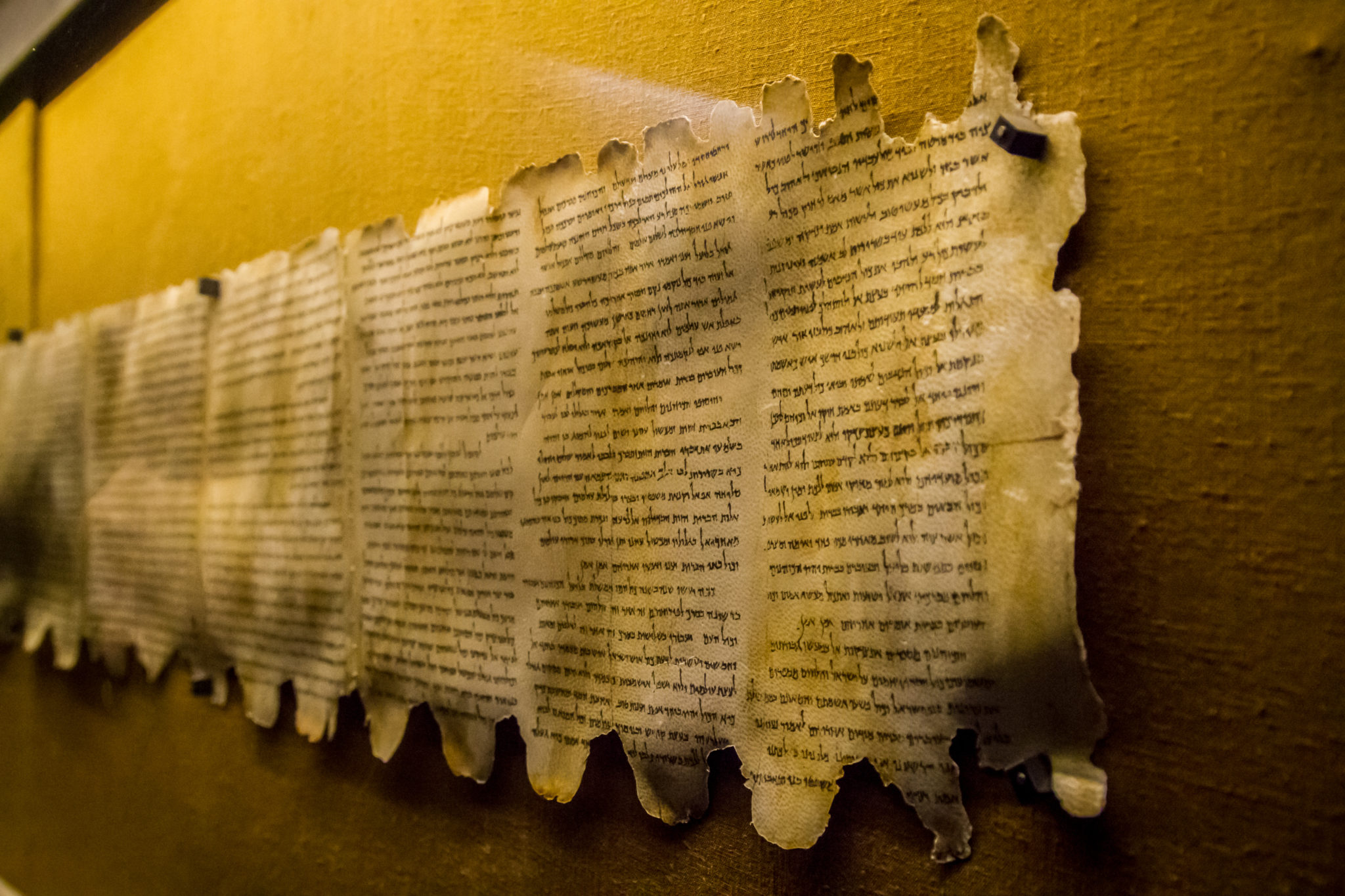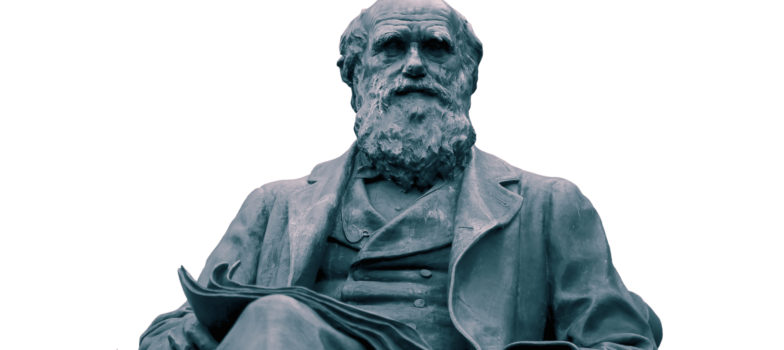New Radiocarbon Ages of Dead Sea Scrolls? Part 2
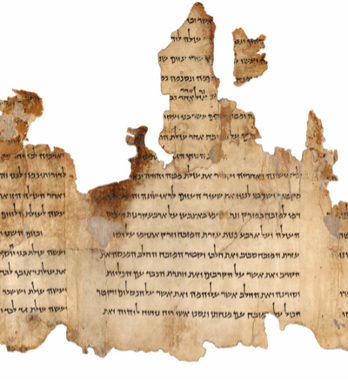
Figure 1: A portion of the Temple Scroll, one of the longest of the Dead Sea Scrolls (Wikimedia Commons)
How Paleography Supports Radiocarbon Dating
As Stephen Chua notes in “New Radiocarbon Ages of Dead Sea Scrolls? Part 1,” radiocarbon dating is a powerful modern tool for helping archaeologists date ancient artifacts. It is especially useful in providing an independent check on other established dating methods, such as paleography. Paleography involves dating manuscripts through the analysis of scribal handwriting styles.
Since scribes normally were trained professionals and their standard, formal handwriting form (involving the shape of letters and the order of pen strokes) generally changed slowly over time, it is possible to estimate the approximate date that a given text was written by comparing it to the rare dated texts available. For example, if you have old letters from your grandparents, you can date them roughly based on the style of the letters they wrote (at one time US public schools emphasized penmanship and standardized, legible cursive script), compared to the handwriting style of your parents or of your peers.
Some experts believe that paleography can date texts to within 25 years in some cases, although other scholars are less certain since a subjective element plays into the analysis of individual scribal hands. Further, in some periods, scribal writing styles were less standardized. Thus, depending on the time period and the rate that styles were changing, paleographic date assignments can be controversial. Fortunately, scholars are starting to use artificial intelligence tools to reduce the human subjective element and gain greater precision in analyzing handwriting.
Using Paleography Combined with Carbon-14 Methods
One example of a paleographic controversy involves the dating of the scrolls written by the Essene community at Qumran. Do these documents date back to the Hasmonean period (150–130 BC), or are they later Herodian (30 BC to 70 AD) texts? The answer to this question is important for understanding the history and origin of the Essenes and their traditions.
The table below, provided by Stephen Chua, lists Dead Sea Scroll data relevant to dating the Essenes (“1s” stands for “one sigma,” or the 68% certainty range for the date. Several possible date ranges may be given due to plateaus in the calibration curve.):
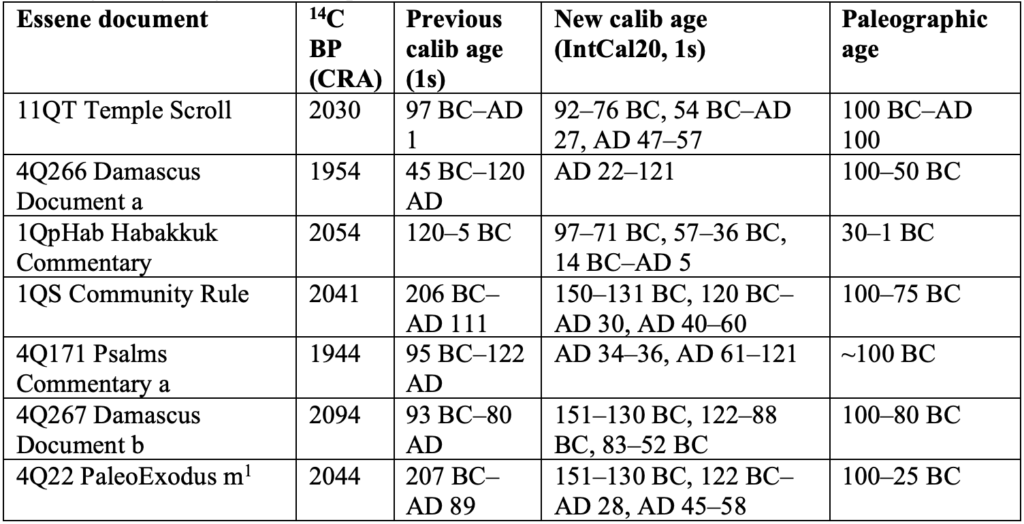
Table 1: The first column shows the scientific name for the Dead Sea Scroll document under consideration. The second column shows the carbon-14 date “Before the Present”(BP), scientifically defined as before 1950. Thus, 2030 is 80 BC. The third column gives the date range based on earlier tree-ring and other calibration techniques. Column four lists the age variability based on the new IntCal20 radiocarbon calibration method. The fifth column notes the paleographic age for each document.
This sample well illustrates some of the controversy involving the comparison of paleographic and radiocarbon methods: 4Q266 Damascus Document a and 4Q171 Psalms Commentary a show a century difference between the writing style and the 14C date. Did the scribe use an “antique” hand when writing these? Or did sample contamination throw off the 14C dates? Only 4Q267 Damascus Document b shows an unambiguous, clear alignment between the 14C and paleographic dates, both of which point to a pre-Herodian origin for the document. Such data generate ample work for scholars!
Of course, the most reliable way to date a text is when it contains a written date, as happens in some legal documents. Four preserved samples are shown in the table below:
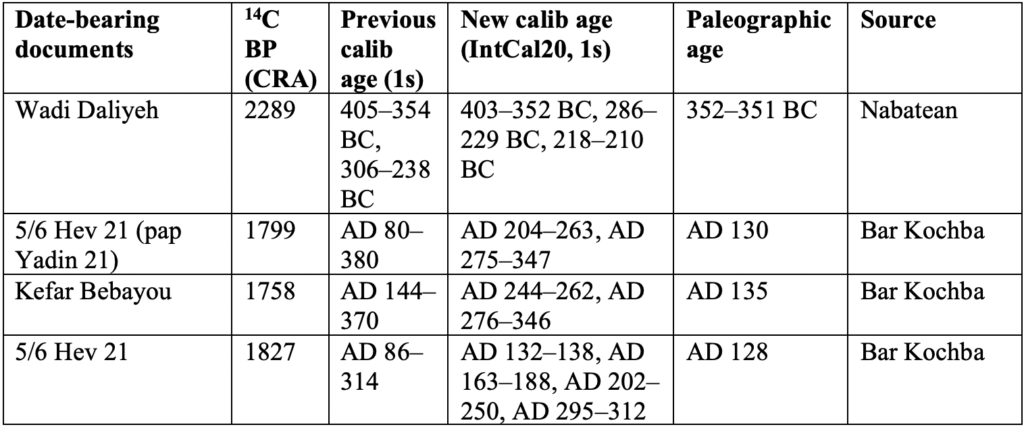
Table 2: The first five columns follow the descriptions in table 1. The sixth column gives the cultural era of the document.
These 14C ages show us that the radiometric dating method itself has significant uncertainty. In most cases, 14C dating has ± 100-year uncertainty range, a handicap similar to paleographic dating. Popular media reporting rarely mentions this uncertainty. Instead, reports often provide a single date written with three significant figures, without explaining that this number is the average of the actual century-or-more date range.
With the Bar Kochba documents above, the situation is even worse, as some of the 14C dates (columns 2–4) are over a century off from their written date (column 5). Aside from possible contamination, a known contributing problem here is that this time period is in a large plateau region of the 14C calibration curve. As the earlier article explained, 14C levels fluctuate in the atmosphere, which affects the initial (and thus final) 14C present in the sample. In the graph below (based on the 2013 calibration curve), there is a long plateau between about 130 AD and 240 AD (shown as a gray box), which gives a century of “error” in this period. (This is why radiocarbon dating the John Rylands P52 papyrus, the earliest preserved copy of the Gospel of John, would not resolve the controversy surrounding its estimated 100–150 AD paleographic date. Because of this plateau, radiocarbon dating cannot resolve whether P52 is a second- or third-century document.)
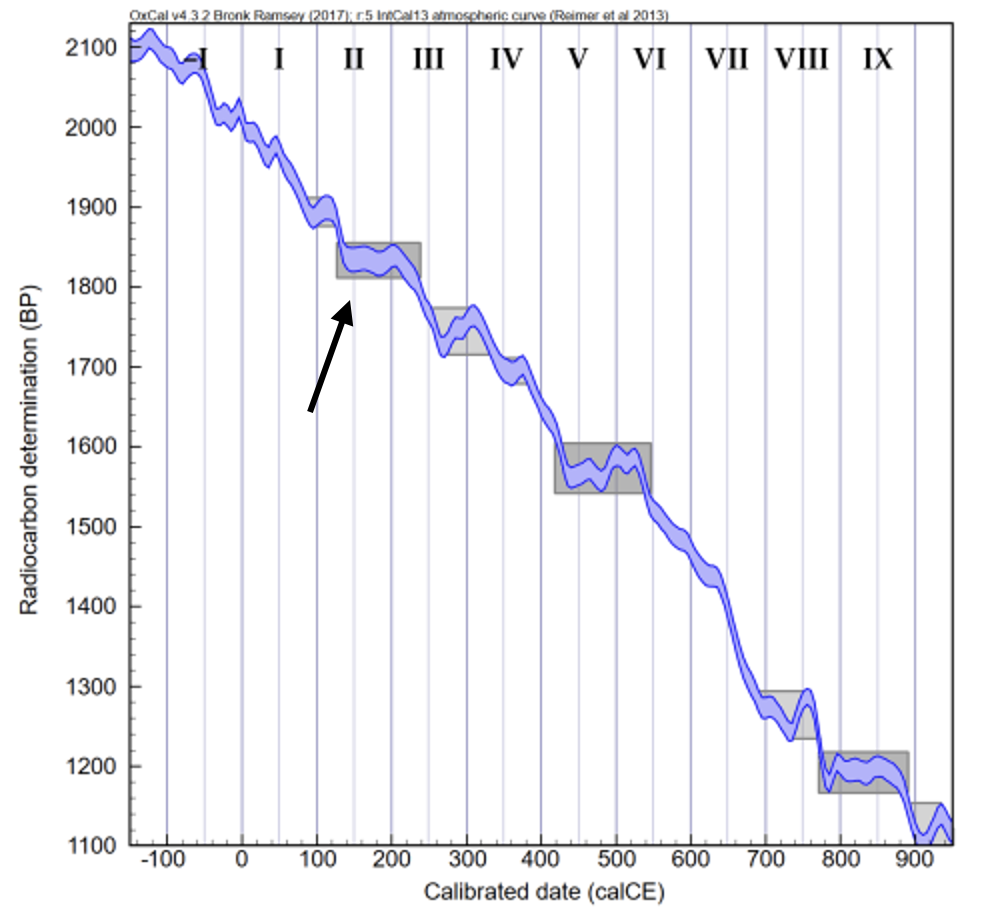
Figure 2: Radiocarbon Calibration Curve
Thankfully, for all of the challenges with dating Essene and Bar Kochba texts, key biblical Dead Sea Scrolls pose far less difficulty when comparing their 14C and paleographic data:

Table 3: See table 1 for descriptions of the columns.
Advances Promise More Dating Consistency
These documents all have unambiguous pre-Christian radiocarbon dates. Thus when reading about the scholarly challenges of comparing 14C and paleographic evidence, it is important to consider the genre of the material, the level of accuracy needed to give us confidence about the reliability of source, and the manuscript date range being analyzed. For example, Atwill and Braunheim conclude in their 2004 article, which focuses on Essene and Bar Kochba documents, “When taken as a whole the 14C dates showed that neither paleography nor 14C dating is a sufficiently precise tool to contribute conclusively to the debate over the accurate dating of the scrolls.”3
But as techniques have improved in both fields, recent work is more encouraging: Josephine Dru reports that when done with care, 14C and paleographical dates agree roughly 80% of the time. Thus, 14C methods can easily help us identify forgeries, and can help us affirm the ancient and pre-Christian origin of critical biblical manuscripts. However, the plateaus, potential contamination, and overall uncertainty range in the method give scholars plenty to discuss and debate. And as both 14C and paleographic analysis techniques continue to improve, hopefully the agreement and consensus among scholars will continue to grow.
Acknowledgement: Thank you to Dr. Titus Kennedy, professional field archaeologist, for contributing his knowledgeable experience and insight to this piece.
Endnotes
- 4Q22 Paleo Exodus m is technically a biblical text, but it is thought to have been copied by Essene scribes rather than being brought to Qumran from elsewhere. Thus, its date is important in the Essene-origins context.
- It is worth noting here that some scholars believe, because it has the trappings of being an official temple/synagogue scroll, that the 1QIsa scroll was written in Jerusalem around 325 BC and then brought to the Essene community two centuries later. Thus, the late paleographic date given for 1QIsa is misleading, influenced by skeptical scholars who tend to assign the latest possible dates to biblical texts in order to give them time to evolve.
- Joseph Atwill and Steve Braunheim, “Redating the Radiocarbon Dating of the Dead Sea Scrolls,” Dead Sea Discoveries, JSTOR, vol. 11, no. 2 (2004): 157; https://www.jstor.org/stable/4193320.


